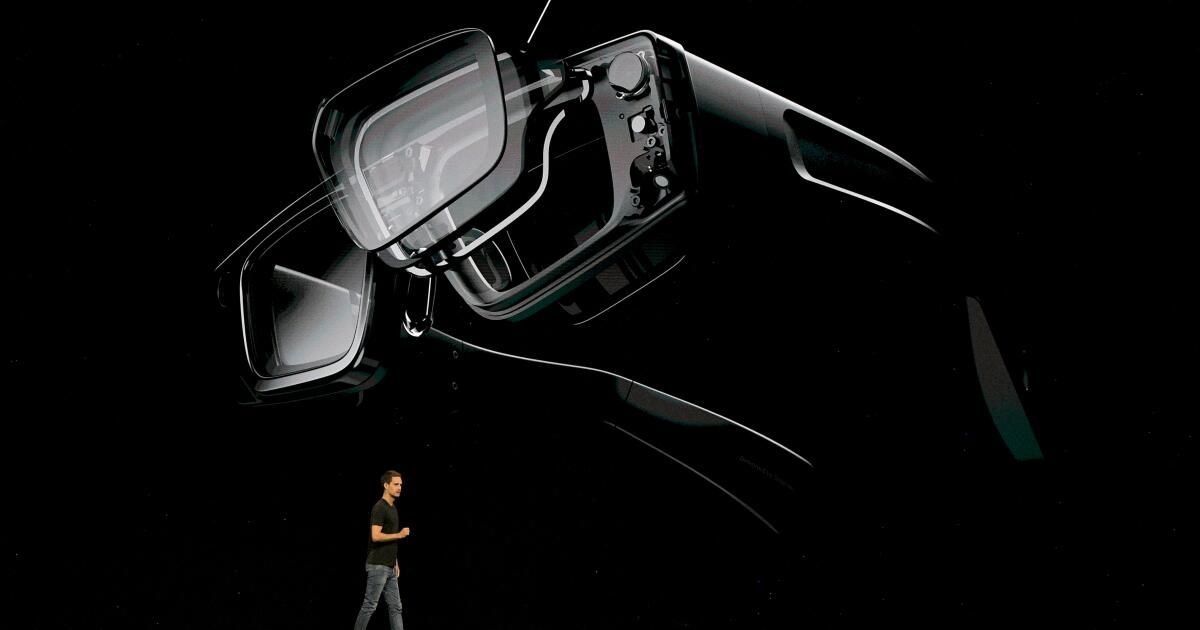In their relentless quest to bring digital products into people’s lives, big tech companies have made some big gains. Smartphones are ubiquitous. Apple Watch users talk to their wrists. AI-powered assistants are everywhere.
But convincing people to put computers on their faces has been a failure. At least so far.
Augmented reality glasses superimpose digital images onto a person's view of the physical world. They are different from virtual reality headsets that completely immerse people in a computer-generated environment.
Over the past decade, tech giants have been focused on developing glasses that project digital displays in front of the wearer's eyes. The fact that they have so far failed to convince people to wear smart glasses on a daily basis hasn't deterred Google and other companies from pouring money into the project, as they believe the hardware could one day transform the way people socialize, work and learn.
Though overshadowed by Silicon Valley giants to the north, Snap, the Los Angeles-based company that created the defunct messaging app Snapchat, is competing in this smart glasses arms race. The company, which unveiled its fifth iteration of augmented reality glasses at its annual conference on Tuesday, hopes that the improved device will drive mass consumer adoption.
“Making augmented reality glasses is really hard. We know the industry is full of companies that have tried it, and we've been working on it for a long time,” Snap CEO Evan Spiegel said from the conference stage Tuesday as he unveiled the glasses.
Other industry giants including Google and Samsung We are also working on smart glasses and Apple is exploring the idea. Competition is raising the stakes for publicly traded Snap as it looks for new products to help it assert itself in the tech world, while rivals such as Instagram and TikTok have outpaced it for attention and market dominance.
But the future in which augmented reality glasses become part of our everyday lives has not yet arrived and there is still a long way to go, according to experts. The future of smart glasses is still uncertain.
“This is a marathon, not a sprint,” said Tuong Huy Nguyen, a Gartner analyst who is part of a team that researches immersive technologies, including augmented reality. “We need an ecosystem that includes not just hardware and software, but also content, to work together and create seamless experiences.”
Snap was first launched smart glasses that could record videos in 2016, selling them in vending machines in Los Angeles before making them available online. The company reported selling 150,000 pairs, but most people stopped buying them. using them After a month and disappointing gadget demand resulted in hundreds of thousands of unsold pairs.
Snap’s latest glasses, called Spectacles, superimpose computer-generated images onto a person’s view of the physical world. The new device is based on the first augmented reality glasses that Snap launched for software developers in 2021. Snap doesn’t sell them to the public, but it’s making them available to software developers in the hopes that they’ll design experiences for the platform.
Augmented reality glasses from Los Angeles-based technology company Snap Inc.
(Snap Inc.)
The possibilities offered by augmented reality glasses are limited. Snap's glasses can track a person's hands, allowing users to pick up and assemble virtual Lego pieces, swing a phantom golf club, draw with friends and punch numbers into a digital calculator. The device also incorporates some artificial intelligence features that allow users to get answers to questions and create an image with a voice command.
In an attempt to drum up interest, Snap has been leaning toward quirky apps and gaming experiences that it knows users are accustomed to, said Ben Bajarin, chief executive and principal analyst at Creative Strategies, a consulting firm that works with technology companies.
But Snap is still cautious when it comes to launching new AR glasses.
“What we can’t predict is consumer adoption, and that’s why we’re taking a more thoughtful approach to how we roll out this version,” said Sophia Dominguez, head of Snap’s AR Platform. “It could change at any time, and if it does, we’re ready to go.”
Dominguez said the company envisions augmented reality glasses one day becoming the primary way to access the digital world. Instead of computer or phone screens, augmented reality glasses, he said, will allow people to keep one foot in each world simultaneously, making it “easy to interact with technology the same way they interact with the real world.”
Skepticism about whether AR glasses will make this possible is high.
Wearing augmented reality glasses could interfere with how people socialize in the physical world, making them feel less present, said Jeremy Bailenson, a Stanford University professor who founded the university's Virtual Human Interaction Lab.
“The use of glasses that connect you to digital content, whether augmented reality or virtual reality, should be done in moderation for special experiences,” he said. “I am not in favor of blocking the perceptual system, sight and hearing, for constant surveillance.”
Bailenson and other Stanford researchers tested the Meta Quest 3, a “mixed reality” device that allows the physical and virtual worlds to be combined. While the device is different from augmented reality glasses, it can display real-time video of the user’s surroundings in the physical world.
The researchers, who were accompanied by a chaperone for safety reasons, wore the Meta headset as they chatted with people, walked around campus and cooked. They reported that people in the physical world felt less real, as if they were watching television rather than interacting with someone face to face.
People wearing augmented reality glasses will also see a different view of the world than people who don’t use the devices, and the loss of that “common ground” will likely affect how people socialize, Bailenson said.
Previous attempts to integrate smart glasses into people's lives have not fared well. When Google launched smart glasses in 2013 that could take photos and videos, they raised privacy and security concerns from consumers, lawmakers and business owners. People began calling Google Glass owners who used smart glasses in socially unacceptable ways “glassholes.” Social no-nos included secretly recording other people and reading on the device while seemingly ignoring others.
And while AR glasses have the potential to be useful in a number of areas, including training, education, shopping and gaming, industry analysts said it will be difficult to convince consumers to adopt these devices.
“Our eyes are a precious piece of real estate,” said Bajarin, who tried out Snap’s augmented reality glasses before the conference. “Consumers are going to take great care of them.”
Keeping the price low enough for people to want to buy it will also be a challenge. Meta, which partnered with Ray-Ban to create a pair of smart glasses that allow people to take photos, listen to music and make video calls with the help of an artificial intelligence assistant, sells its device for about $300. Snap has not said how much it will charge for its latest glasses if they become available to the public.
Snap’s glasses are still a work in progress. They’re heavier than regular glasses, get uncomfortably warm after prolonged use, and have a battery that lasts less than an hour. They require awkward hand movements, such as reaching out to grab digital objects in the air and tapping the front and back of your hand to adjust the volume or launch a menu.
The device runs on Snap’s own operating system, giving the company more control over the experience. During a recent preview of the augmented reality glasses at a home in San Francisco, a Times reporter used voice commands to create images that appeared almost instantly: a robot dog, Elsa from Frozen and the San Francisco cityscape.
In another activity, a yellow creature appeared with wide eyes before emerging into a real San Francisco courtyard with a stunning view of the city. Niantic, the creator of the augmented reality game Pokemon Go, created the Peridot Beyond experience for Snap's augmented reality headset.
Asim Ahmed, Niantic's global marketing chief, said the AR headset gives the company a chance to experiment and design a “new kind of gaming paradigm.” What works in a game played on a mobile phone may not work on AR headsets, which offer a wider field of view and don't rely as much on hands to play. Niantic also had to think about safety issues, such as making sure the virtual pet doesn't get too close to the owner and block their view.
With a number of challenges, including figuring out how to cram processing power and other computing hardware into a device that's smaller than a smartphone, analysts predict it will be several years at least before smart glasses achieve widespread adoption, if ever.
In the first quarter of 2024, shipments of virtual reality and augmented reality headsets fell 67.4% year-on-year but are expected to improve as consumers transition to new types of devices, according to the market intelligence firm. IDCMeta led the market, followed by ByteDance, Xreal and HTC.
Analysts said that since companies are still testing AR glasses or developing them, a clear leader has yet to emerge.
Jacob Bourne, an analyst at Emarketer, said Snap's rivals, including Meta and Google, have more money to invest in research and development of augmented reality glasses. Meta, which owns Facebook, Instagram and WhatsApp, has 3.27 billion people using one of its apps every day. Snapchat has 432 million daily active users.
“I would probably bet more on Meta because it has the key to the… [research and development] “We have the capabilities to really bring that to market,” Bourne said. “But I wouldn’t count out Snap at all.”












